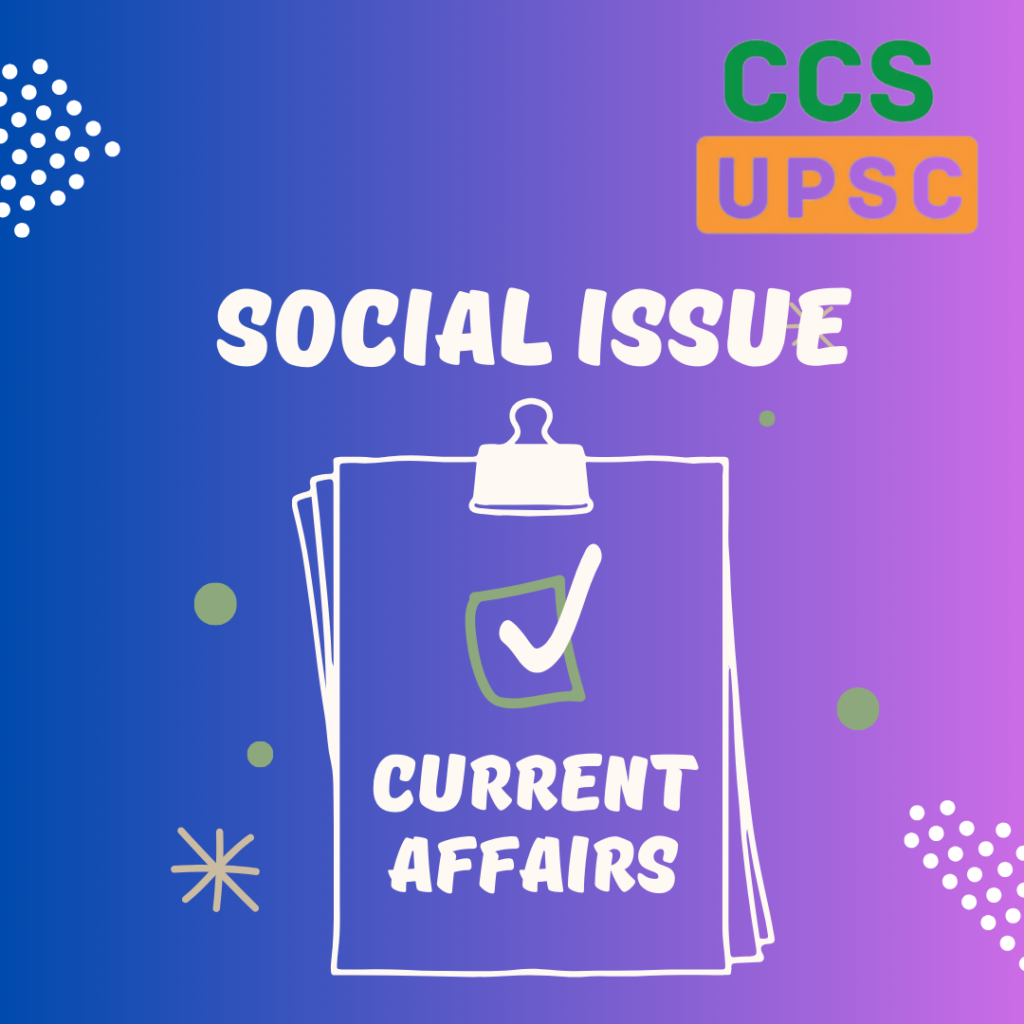Context
∙ Recently, the Union Finance Minister informed that nearly 25 crore people have been raised from multi-dimensional poverty in the last 10 years.
About the Poverty
∙ It is a state or condition in which a person or community lacks the financial resources and essentials for a minimum standard of living, such as housing, clean water, healthy food, and medical attention.
∙ Traditionally, poverty is calculated based either on income levels or, if income data are not available, on expenditure levels.
∙ The ‘poverty lines’ are actually expenditure levels that are considered minimum enough for someone to be called poor.
∙ A person who is poor can suffer multiple disadvantages like poor health or malnutrition, a lack of clean water or electricity, poor quality of work or little schooling.
∙ Focusing on one factor alone, such as income, is not enough to capture the true reality of poverty.
What is the Multidimensional Poverty Index (MPI)?
∙ Globally, the MPI uses 10 indicators covering three main areas:
ο Health includes nutrition and child & adolescent mortality indicators.
ο Education includes years of schooling and school attendance indicators.
ο Standard of living includes six household-specific indicators: housing, household assets, type of cooking fuel, access to sanitation, drinking water, and electricity.
∙ The Indian MPI has two additional indicators:
ο Maternal Health (under the health dimension) and;
ο Bank Accounts (under the standard of living dimension).
Multidimensional Poverty in India Since 2005-06:
∙ It is published by NITI Aayog with technical inputs from the United Nations Development Programme (UNDP) and the Oxford Policy and Human Development Initiative (OPHI).
∙ It uses indicators covering three main areas: health, education, and standard of living.
∙ It was found to decline from 29.17% in 2013-14 to 11.28% in 2022-23 with about 24.82 crore people escaping poverty during this period.
∙ At the States’ level, Uttar Pradesh topped the list with 5.94 crore people escaping poverty followed by Bihar at 3.77 crore and Madhya Pradesh at 2.30 crore.
∙ However, the largest number of poor people in the world — 228.9 million — lived in India in 2020.
Related Data
∙ The NFHS-5 (2019-21): About 14.96% of India’s population are multidimensionally poor compared to 24.85% of the population that was multidimensionally poor based on the 2015-16 (NFHS-4).
∙ It shows that nearly 135 million individuals escaped poverty during the 5-year period.
∙ A UNDP study highlighted that 415 million Indians came out of multidimensional poverty in the last 15 years.
∙ According to the IMF, the ‘extreme poverty’ was as below 1% in 2020 due to the Pradhan Mantri Garib Kalyan Ann Yojana (PMGKY).
Reason for Poverty in India
∙ Economic Slowdown and Policy Decisions: The economy has been slowing for nine quarters prior to the outbreak of the novel coronavirus pandemic.
∙ Unemployment had reached a 45-year high in 2017-18.
∙ Child Malnutrition: India’s poor score comes almost entirely from the child stunting and wasting parameters.
∙ Almost 35% of Indian children are stunted, and although this is much better than the 54.2% rate of 2000, it is still among the world’s worst.
∙ Almost 17.3% of Indian children under five are wasted, which is the highest prevalence of child wasting in the world.
∙ Pandemic Impact: The pandemic led to a ‘sudden increase in poverty’.
∙ Over an eight month period (March to October 2020), average incomes of the bottom 10% of households were lower by Rs 15,700.
∙ Homelessness: Increasingly, a large number of persons are being rendered homeless across the world.
∙ There are both natural as well as man-made reasons that are contributing to this crisis
Government Efforts
∙ Interventions through Policies/Schemes: The government has expanded the social security net through schemes like Pradhan Mantri Suraksha Bima Yojana (Accident Insurance), Atal Pension Yojana (Unorganized Sector), and Pradhan Mantri Jeevan Jyoti Yojana (Life Insurance).
∙ The MUDRA Yojana has enabled about eight crore people to start new businesses.
∙ Rural Development: The Ministry of Rural Development has implemented various programs to increase livelihood opportunities, empower rural women, provide a social safety net, and improve infrastructure in rural areas.
∙ The main focus is on increasing livelihood opportunities, empowering rural women, providing a social safety net, skilling rural youth, infrastructure development, increasing land productivity, etc.
∙ Nutrition and Health: Despite the progress in economic development, a significant portion of the Indian population cannot afford healthy food.
∙ Initiatives like Poshan Abhiyan and Anaemia Mukt Bharat have been launched to address this issue.
∙ State-Level Efforts: States like Uttar Pradesh, Bihar, and Madhya Pradesh have recorded the largest decline in the number of multidimensionally poor people.
Various Committees
∙ There are various committees formed with the objective to estimate the number of people living in poverty in India. These are:
∙ The Working Group of 1962;
∙ V N Dandekar and N Rath in 1971;
∙ Y K Alagh in 1979;
∙ D T Lakdawala in 1993;
∙ Suresh Tendulkar in 2009;
∙ C Rangarajan in 2014.
∙ The Lakdawala Committee assumed that health and education is provided by the state.
∙ Therefore, expenditure on these items was excluded from the consumption basket it proposed. Since expenditure on health and education rose significantly in the 1990s, the Tendulkar Committee included them in the basket.
A Way Forward
∙ Poverty eradication remains India’s top priority, but there is still work to be done. Strategies such as increasing livelihood opportunities, empowering rural women, providing a social safety net, and skilling rural youth, infrastructure development, increasing land productivity, etc seem to be effective in reducing poverty.
∙ There is a need to address the inequalities of income, education, and opportunity that are all interconnected that can foster social cohesion and boost general well-being.
∙ It is essential that the government should provide education and health services free of cost for the deserving citizens and those from the socially oppressed classes.


